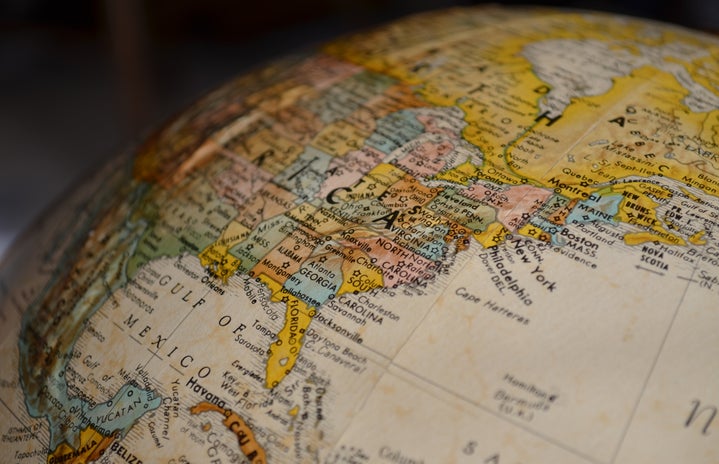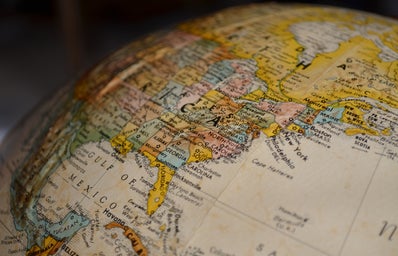If someone gave you a map without labels and asked you to show them Guatemela, would you know where to point? If you’re being honest with yourself, many of you wouldn’t. Some of you might have even pointed to South America. This isn’t your fault. This isn’t even your eighth-grade geography teacher’s fault. Rather, it is the white washing of the American education system. And hopefully, by the time you finish reading this article, we can facilitate the process in ending that for all.
It is Latinx Heritage Month. Although Latinxs should be celebrated every month, as they diversify and contribute so much to this country, this is the designated time to do so. So, lets learn about some of the countries this month celebrates. We will start at Belize and work our way down the landmass until we reach Panama.
Belize is the only country in Central America where English is the official language. Other languages spoken are Kriol, Spanish, Garifuna and Mayan. Statistically, Natives make up one-tenth of Belize’s entire population. Belize still honors its Mayan roots and is home to over 900 Mayan temple sites. Belizeans recognize an emblematic tradition of the Garifuna that is practiced when someone is sick. They view sickness as a result of a damaged relationship with ancestors, and they use this ritual to be grateful for the life they do have. It involves dancing, singing, manifesting and following the guidance of a shaman. It takes place from July to August and is extremely sacred. Here are 10 dishes you need to try from Belize.
Guatemalans, or Ladinos to people from the area, are mostly people of Native American and European descent. Most of Central America’s Indigenous population lives in Guatemala, with Mayans making up two-fifths of their population. They recognize something known as the Fiesta Patronal. Each Saint of each municipality is celebrated each day with special activities and traditions. Here are 14 dishes you need to try from Guatemala.
El Salvador is home to one of the endangered languages of the world. There are only 20 people left who fluently speak Pipil, which descended from Nahuatl. El Salvador is heavily influenced by Mayan culture and is home to the Tazumal. A tradition in El Salvador is Desfile del Correo. People of all ages take to the streets in masks with parades of people, musical bands and notable individuals like mayors and religious authorities honor the celebration with the residents. Here are 16 dishes you need to try from El Salvador.
Ninety percent of Honduras’ population are mestizos — people from Indigenous and European descent. Some of the best-preserved examples of Mayan architecture can be found in Honduras and their ruins are known for their impressive hieroglyphics and stelae. A tradition is the Feria Isidra de La Ceiba. It culminates the Great International Carnival of Friendship. There are other traditions such as the Baile de los Diablitos, which is one of the oldest dramatizations in Central America, having roots in Lenca culture. Here are 15 dishes you need to try from Honduras.
Nicaragua, the country my family is from, is the largest country in Central America. It is home to the largest cathedral in Central America: the Leon Cathedral. It is also home to the ruins of Leon Viejo, which is one of the oldest Spanish colonial settlements in the Americas. The Nicaraguan city of Masaya is deeply rooted in folklore and celebrates the Gran Torovenado del Pueblo. Festivities are all based on myths and legends. There is also a festival called Mayo Ya where people dance during the rain and harvest. Here are 10 dishes you need to try from Nicaragua. Nacatamales are my personal favorite.
Costa Rica is one of the most diverse places in the world. There are many celebrations that honor their Indigenous heritage. Juego de los Diablitos de Boruca happens in Puntarenas at the end of each year. Religious festivities that combined Indigenous and Catholic tradition include the honoring of Virgin of Guadalupe through the Danza de La Yegüita as well as the Pilgrim Indian Dance to celebrate the Black Christ of Esquipulas. Here are 9 dishes you need to try from Costa Rica.
Last but certainly not least, we have Panamá. The Panama Canal is the only waterway to link the Pacific and Atlantic Oceans and because of the canal, Panamá is the only country in Central America that isn’t driven by agriculture. Chibcha and Caribbean culture heavily influence this country. Carnivals are extremely important to Panamá, especially the Carnival of Panamá and the Carnival of Las Tablas. Celebrated for four consecutive days, it (which carnival are you referring to here?) begins with the coronation of the Carnival Queen on Friday night and ends with the burial of the sardine on Tuesday night. Here are 11 dishes you need to try from Panamá.
Every country has its own traditions. Although the ingredients to their native foods may be similar, they all taste incredibly different and are utilized and appreciated in their own ways. One large similarity is how prevalent Indigenous culture still is to each of the countries. With myths that are thousands of years old and traditions that are incredible to witness, these countries shouldn’t be associated as one another. Remember them and remember to respect their inhabitants as well.



